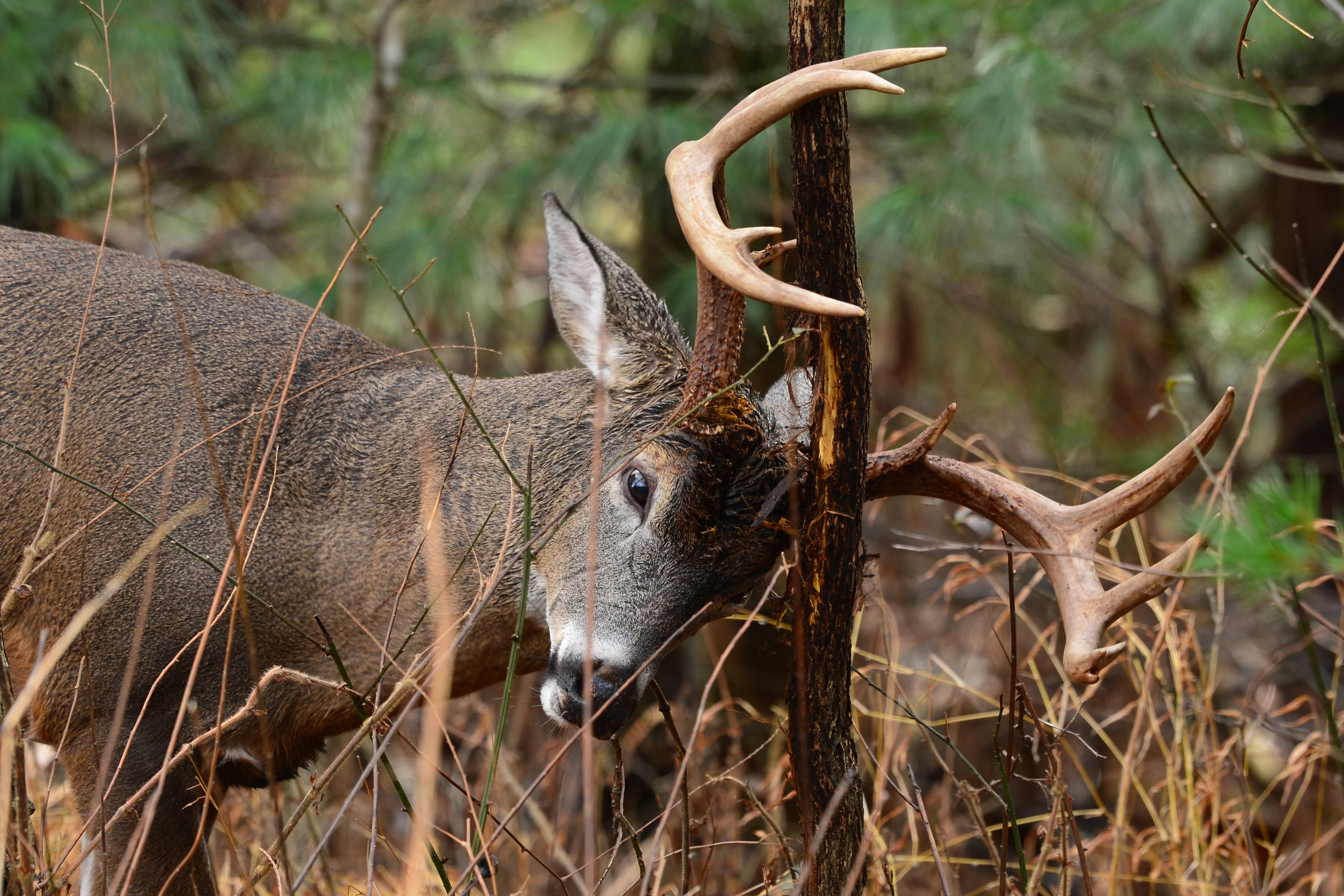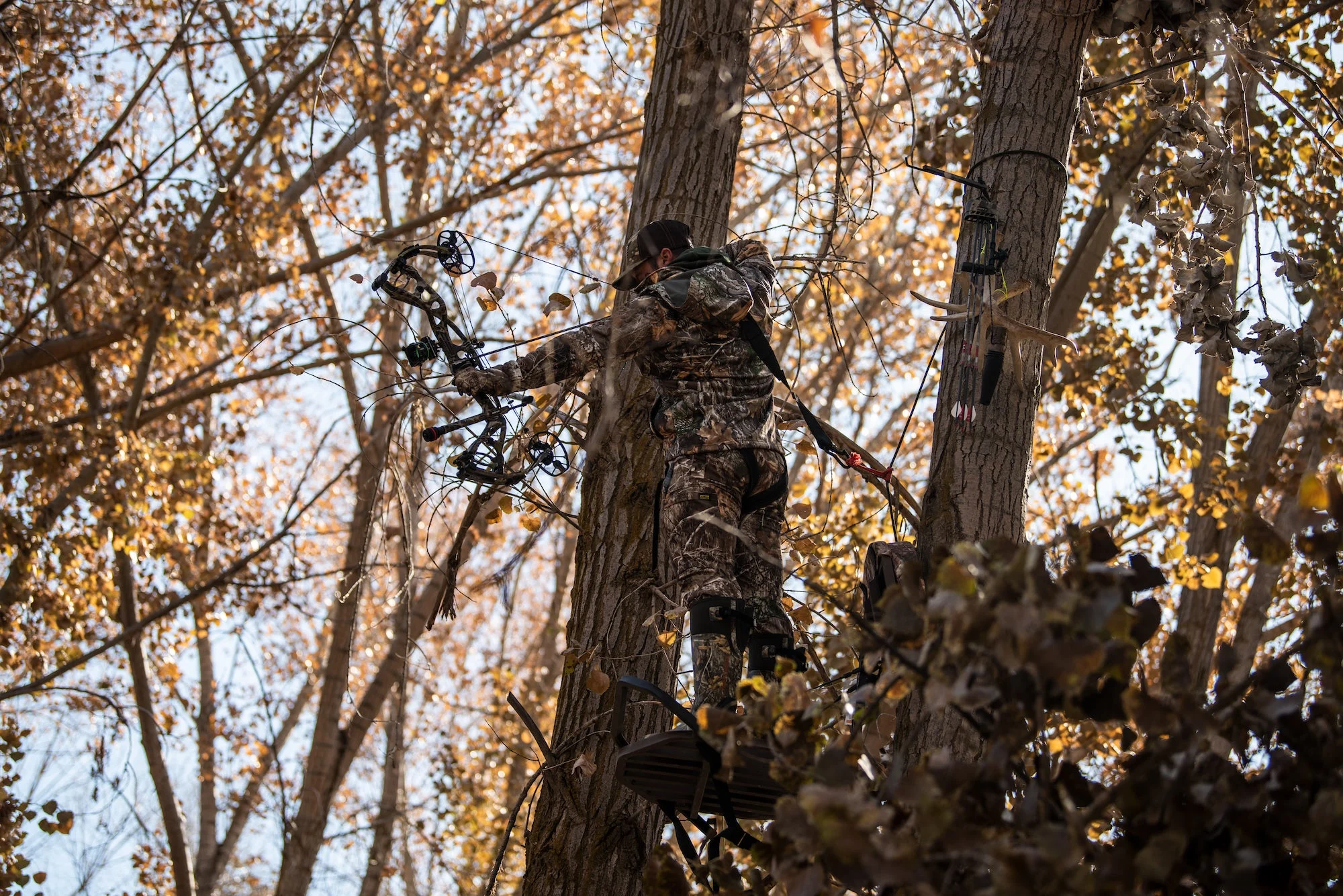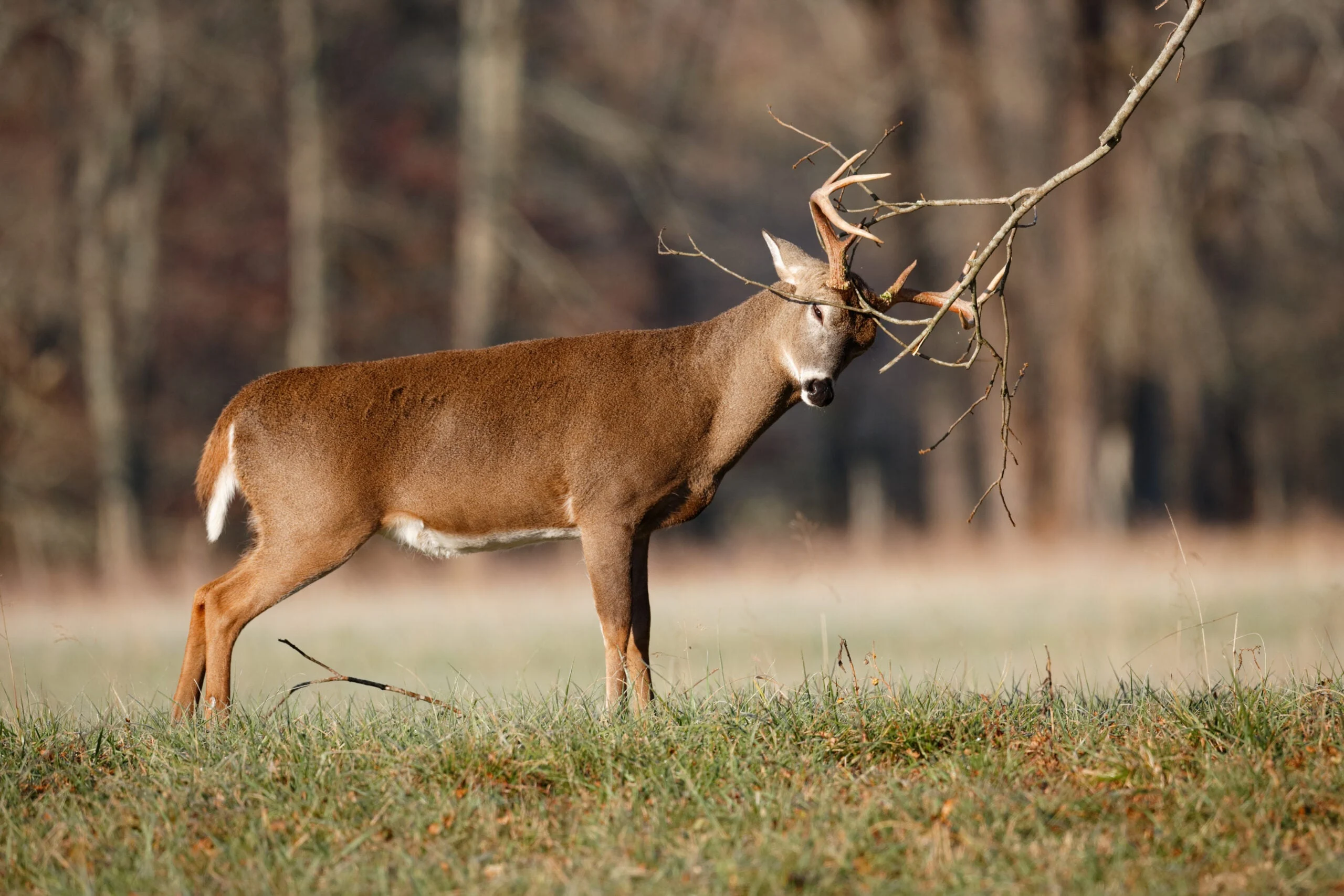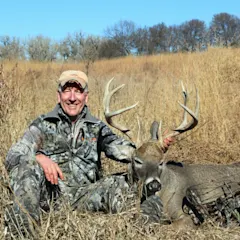If you're like every other whitetail fanatic, you've been waiting all year for the rut—and now, finally, your patience is about to pay off. Back in September, we revealed the seven Best Days of the 2024 Whitetail Rut, and the first day is coming up this week, on Thursday, October 24. This has always been a special date for me, personally, as it marks an October day many years ago when I tagged my first Pope & Young buck. But that was no fluke. The same things that made it a perfect day to be in the deer woods 30 years ago still hold today.
Everything about buck physiology has been building toward this. Bucks have been rubbing trees since they shed velvet, but now they’re picking on bigger trees and getting much more aggressive. They’ve been pawing at the ground to make scrapes, too, but now they're almost obsessive about it—and far more likely to work that sign during daylight. In short, it’s getting exciting in the deer woods and you need to be out there to take advantage. Here's how.
Rut Phase: Late Pre-Rut

Bucks are in the final stretch of the pre-breeding period, and if a doe or two has already popped in your area (entirely possible), things could really be getting serious. Testosterone has been slowly building in bucks since early September. As a far as they are concerned, it's go time, but most does aren't ready. The explosion of rubs and scrapes that you'll see this week is the deer equivalent of pacing the sidelines, waiting for the real game to start. The best part for hunters is that virtually all of this activity is occurring within a buck’s home range and much of it within his core area. So if your cameras or scouting trips have tipped you off to the favorite haunts of a good buck or two, now is an excellent time to take a swing at him.
Related: The Biggest Early Season Bucks of 2024, So Far...
October 24 Morning Hunt Plan: Sneak Into a Transition Zone

I love morning hunts, but I typically avoid them all through the early season and into mid-October, especially if I know where a nice buck is feeding and bedding. I want this deer to go about his business without suspecting I’m on his tail, and since he’s typically in or near his bedding area by first light, the chances of bumping him are high. That all changes now, when he’ll start dallying near food sources, nosing around does, and taking some extra time to lay down or check rub and scrape lines before heading to bed.
So now is the perfect time to slip into a morning stand, one that rests in the transition area between a main food source and a buck bedding area. Often, a buck will mark his path back to bedding with a rub or scrape line, which can be unraveled on a midday scouting session. I cheat slightly toward the food source on these first morning hunts, as I don’t want to mess with bedding-area sanctuaries just yet. If you hunt in farm country like I do, it's a good idea to wait for pink light before leaving the truck. This added light gives you a chance to glass major feed fields to make sure all the deer have left them before slipping into your stand. You only need to sit for a few hours; bucks might be a little late getting to bed, but they’re not going to push themselves with movement that extends well into the morning. There will be plenty of those mornings in the weeks to come.
October 24 Evening Hunt Plan: Sit on Buck Sign in a Staging Area

Staging areas—where deer often linger in the timber just off a food source–are always a solid afternoon setup, but the late pre-rut is when they really shine. In the weeks preceding today, bucks linger at staging areas for a bit, then determinedly head out to fill their bellies. But during this phase, mature bucks will spend a lot more time in a staging area working off steam at existing rubs and scrapes. I've seen them hit one staging area and then head straight to another instead of hitting the food.
While any staging area is a solid bet this afternoon, spend some time scouting near larger food sources that are attracting a lot of does, and search for two or more staging spots located reasonably close to each other. Bucks rarely have just one entry to a food source and, consequently, there’s typically a staging area associated with each entry. Once you’ve located a couple stage-ups, set up on the one where the wind is in your favor that also features good buck sign. I like to create two or three mock scrapes upwind of my location, just before I hang my stand. And while an overhanging branch is usually important when creating most mocks, it's not necessary on this setup. All the scrapes have to do is serve as a visual cue for a buck to come investigate, and the odor of fresh dirt will typically seal the deal.
Hot Tip: Use Mock Scrapes to Blow Up an Already Hot Area

In addition to the quick mock scrapes I'll make when I'm setting up in a staging area, I'll also add two or three mock scrapes to any fresh existing scrape I find while scouting this time of year. But I'll be more thorough about it. I make sure to make them underneath a good licking branch, and then I'll zip-tie grapevines to the limb (a scent wick works fine if vines aren’t handy) then douse with deer scent. A local buck will usually find the new scrape(s) in short order and invariably gets serious about responding with even more sign. The introduction of an "intruder buck" can also get a buck more serious about patrolling his scrape and rub lines more vigorously, and often in daylight. Set up a cellular trail camera to monitor this spot, and when you start getting picks of good bucks hitting your scrapes in daylight, it's time to make your move.
Related: The Best Cellular Trail Cameras of 2024, Expert Tested


